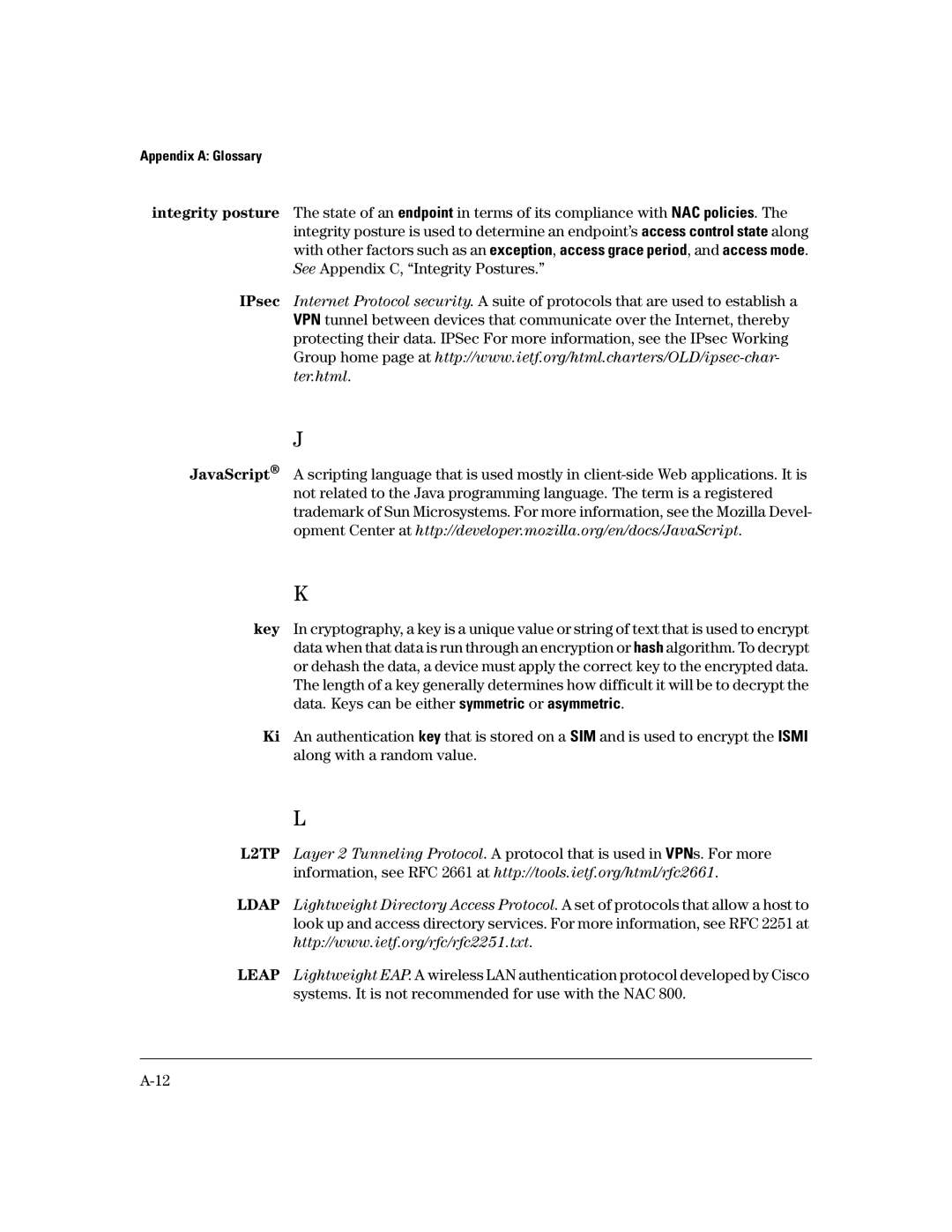Appendix A: Glossary
integrity posture The state of an endpoint in terms of its compliance with NAC policies. The integrity posture is used to determine an endpoint’s access control state along with other factors such as an exception, access grace period, and access mode. See Appendix C, “Integrity Postures.”
IPsec Internet Protocol security. A suite of protocols that are used to establish a VPN tunnel between devices that communicate over the Internet, thereby protecting their data. IPSec For more information, see the IPsec Working Group home page at
J
JavaScript® A scripting language that is used mostly in
K
key In cryptography, a key is a unique value or string of text that is used to encrypt data when that data is run through an encryption or hash algorithm. To decrypt or dehash the data, a device must apply the correct key to the encrypted data. The length of a key generally determines how difficult it will be to decrypt the data. Keys can be either symmetric or asymmetric.
Ki An authentication key that is stored on a SIM and is used to encrypt the ISMI along with a random value.
L
L2TP Layer 2 Tunneling Protocol. A protocol that is used in VPNs. For more
information, see RFC 2661 at http://tools.ietf.org/html/rfc2661.
LDAP Lightweight Directory Access Protocol. A set of protocols that allow a host to look up and access directory services. For more information, see RFC 2251 at http://www.ietf.org/rfc/rfc2251.txt.
LEAP Lightweight EAP. A wireless LAN authentication protocol developed by Cisco systems. It is not recommended for use with the NAC 800.
